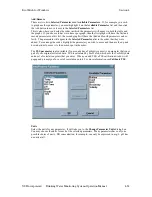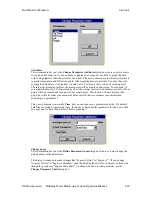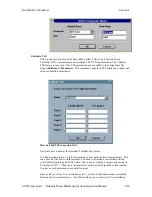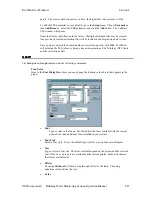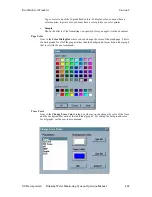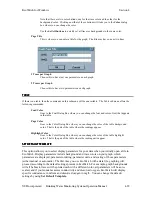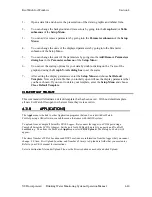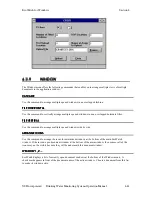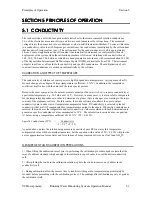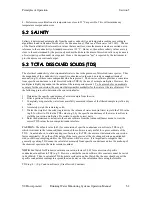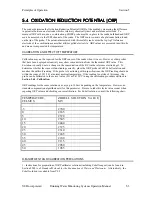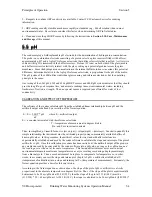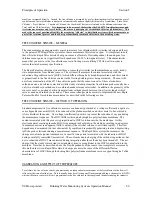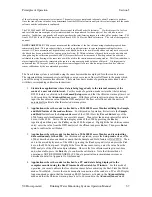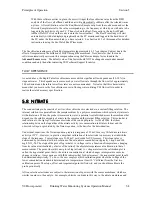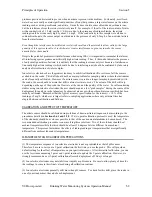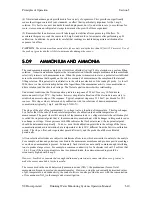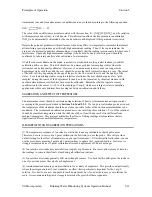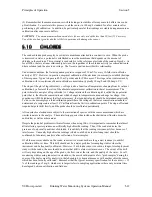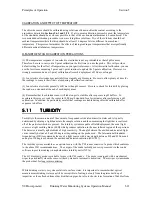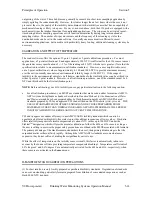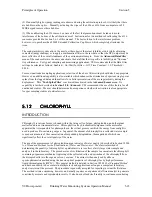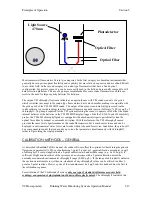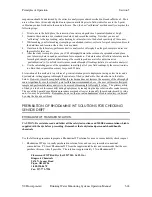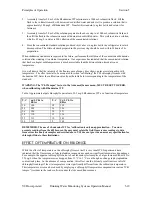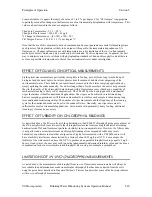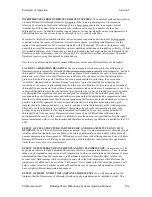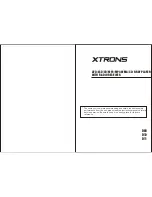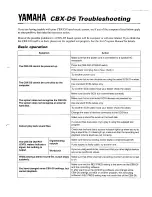
Principles of Operation
Section 5
YSI Incorporated Drinking Water Monitoring Systems Operation Manual
5-6
usually not measured directly. Instead, the free chlorine is measured by a color-forming chemical test under one set of
conditions and the total chlorine is measured colorimetrically under a slightly different set of conditions. Since Total
Chlorine = Free Chlorine + Combined Chlorine, the Combined Chorine is calculated as the difference between the
Total and Free Chlorine values.
It is important to be aware of the fact that the YSI 6572 free chlorine sensor and
its electronics measure only free chlorine – the sensor is unresponsive to combined chlorine (chloramines). This
makes the sensor of questionable utility for measuring “chlorine” in distribution systems which use ammonia as
part of the treatment process and thus have predominantly combined chlorine in their drinking water.
FREE CHLORINE SENSOR -- GENERAL
The sondes employ an amperometric sensor to measure free chlorine which is similar in design and theory
to the patented YSI Rapid Pulse system for the measurement of dissolved oxygen. It is important to note
that, while the Rapid Pulse dissolved oxygen sensor is effectively flow independent, the analogous free
chlorine sensor possesses significant flow dependence (20-30 % in stagnant water). This characteristic
means that you must use the free chlorine sensor in flowing water utilizing YSI flow cells in order to
realize the stated accuracy specification.
The Rapid Pulse free chlorine system utilizes a sensor that is similar to other membrane-covered, steady-
state amperometric free chlorine sensors. The system still measures the current associated with the
reduction of hypochlorous acid (HOCL) which diffuses through a hydrophilic membrane, and this current
is proportional to the free chlorine content in the flowing drinking water being evaluated. The user will
note from examination of the 6572 free chlorine probe that the sensor consists of three electrodes (a
cathode, anode, and reference electrode) while steady state amperometric free chlorine probes usually have
only two electrodes (a cathode and a combined anode-reference electrode). In addition, the geometry of the
sensor is novel, consisting of a thin linear platinum cathode placed between two silver rectangles which
serve as anode and reference electrodes. These sensor changes are necessary to implement the new Rapid
Pulse method for free chlorine measurement as described in the following section.
FREE CHLORINE SENSOR -- METHOD OF OPERATION
Standard amperometric free chlorine sensors are continuously polarized at a voltage sufficiently negative to
cause hypochlorous acid (HOCl) to be reduced at the platinum cathode and silver metal to be oxidized to
silver chloride at the anode. The voltage is sufficiently positive to prevent the reduction of oxygen during
the measurement sequence. The HOCl diffuses through a hydrophilic polyvinylidene membrane. The
current associated with this process is proportional to HOCl solution outside the membrane. As this
electrochemical reaction proceeds, HOCl is consumed (or depleted) in the medium, resulting in a decrease
in measured current (and apparent HOCl content) if the external solution is not stirred rapidly. This flow
dependence is minimized (but not eliminated) by rapidly and reproducibly polarizing (on) and depolarizing
(off) the probe electrodes during a measurement sequence. The Rapid Pulse system thus measures the
charge or coulombs (current summed over a specific time period) associated with the reduction of HOCl
during a carefully controlled time interval. The coulombs due to charging of the cathode (capacitance), but
not to reduction of HOCl, are subtracted during integration after the cathode has been turned off. The net
charge, like the steady state current in a standard system, is proportional to the HOCl concentration in the
medium. Note that, as described above, the flow dependence of the sensor is not completely overcome by
this method (as it is in Rapid Pulse dissolved oxygen sensors) because of the different diffusion
characteristics of HOCl through the hydrophilic polyvinylidene membrane versus oxygen through a Teflon
membrane.
CALIBRATION AND EFFECT OF TEMPERATURE
To calibrate the free chlorine sensor, you must make an independent measurement of the free chlorine in the flow cell
effluent at the time of calibration. This is usually done by collecting an effluent sample, adding a chemical to it (DPD)
which will form a red color which is proportional to the free chlorine in the sample and then determining the intensity

